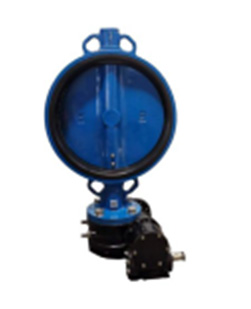Nov . 19, 2024 16:55 Back to list
electric actuated butterfly valve
Electric Actuated Butterfly Valve A Comprehensive Overview
The electric actuated butterfly valve is a pivotal component in various industrial applications, playing an essential role in fluid control systems. These valves are renowned for their ability to regulate the flow of liquids and gases, offering both reliability and efficiency. This article delves into the functionalities, advantages, applications, and maintenance considerations associated with electric actuated butterfly valves.
What is an Electric Actuated Butterfly Valve?
A butterfly valve consists of a circular disc or plate that rotates around a central axis. This mechanism allows for efficient control of fluid flow through a pipe. An electric actuator is attached to the valve, which automates the opening and closing of the valve. Rather than relying on manual operation, the actuator uses electrical energy to adjust the position of the butterfly disc, providing precise control over the flow rate.
Electric actuators can convert electrical energy into mechanical motion, enabling the butterfly valve to operate efficiently and effectively in various environments. The ability to remotely operate these valves enhances their utility, especially in installations that require frequent adjustments or are located in hazardous areas.
Advantages of Electric Actuated Butterfly Valves
1. Precision Control Electric actuated butterfly valves offer accurate flow regulation, allowing for fine-tuning of liquid and gas flows. This precision is vital in many industrial processes where flow rates can significantly affect performance.
2. Efficiency These valves operate quickly, ensuring minimal lag time in response to control signals. The electric actuators’ speed facilitates rapid adjustments, which is particularly important in processes requiring dynamic response to changing conditions.
3. Remote Operation One of the paramount benefits of electric actuated valves is the ability to operate them remotely. This capability reduces the need for manual intervention, enhancing safety and efficiency in operations.
4. Reduced Maintenance These valves are designed for durability, which translates to lower maintenance costs. Electric actuators generally require less frequent servicing than pneumatic or hydraulic systems, thereby decreasing lifecycle costs.
5. Energy Saving Electric actuated butterfly valves can be designed to consume less energy compared to their pneumatic and hydraulic counterparts, particularly in applications where compressed air is required to operate traditional valves.
Applications of Electric Actuated Butterfly Valves
electric actuated butterfly valve

Electric actuated butterfly valves are widely used across various industries. Some of the prominent applications include
- Water Treatment Plants These valves control the flow of water during treatment processes, ensuring that the correct flow rates are maintained.
- Chemical Processing In chemical plants, precise flow control is crucial. Electric actuated butterfly valves help in regulating the flow of corrosive substances effectively.
- HVAC Systems In heating, ventilation, and air conditioning systems, these valves play a vital role in controlling airflow, significantly impacting system efficiency and comfort levels.
- Food and Beverage Processing Food safety and compliance with hygiene standards are critical in the food industry. Electric actuated butterfly valves ensure precise control while adhering to strict regulations.
Maintenance Considerations
To ensure the longevity and operational efficiency of electric actuated butterfly valves, regular maintenance is essential. Key maintenance practices include
- Routine Inspections Regular checks for any signs of wear or damage can prevent unexpected failures.
- Calibration Periodic calibration of the actuator is necessary to maintain accurate flow control.
- Lubrication Ensure that moving components are adequately lubricated to reduce friction and wear.
- Electrical System Checks Regular testing of the electrical connections and actuator functionality ensures reliable performance.
In conclusion, electric actuated butterfly valves offer a multitude of benefits that make them indispensable in modern industrial applications. Their efficiency, precision, and ability to operate remotely position them as a go-to solution for effective fluid control. As industries continue to evolve, the role of these valves will only become more significant, underscoring the importance of understanding their functionalities and maintenance needs for optimal performance.
Share
-
Reliable Wafer Type Butterfly Valves for Every IndustryNewsJul.25,2025
-
Reliable Flow Control Begins with the Right Ball Check ValveNewsJul.25,2025
-
Precision Flow Control Starts with Quality ValvesNewsJul.25,2025
-
Industrial Flow Control ReliabilityNewsJul.25,2025
-
Engineered for Efficiency Gate Valves That Power Industrial PerformanceNewsJul.25,2025
-
Empowering Infrastructure Through Quality ManufacturingNewsJul.25,2025